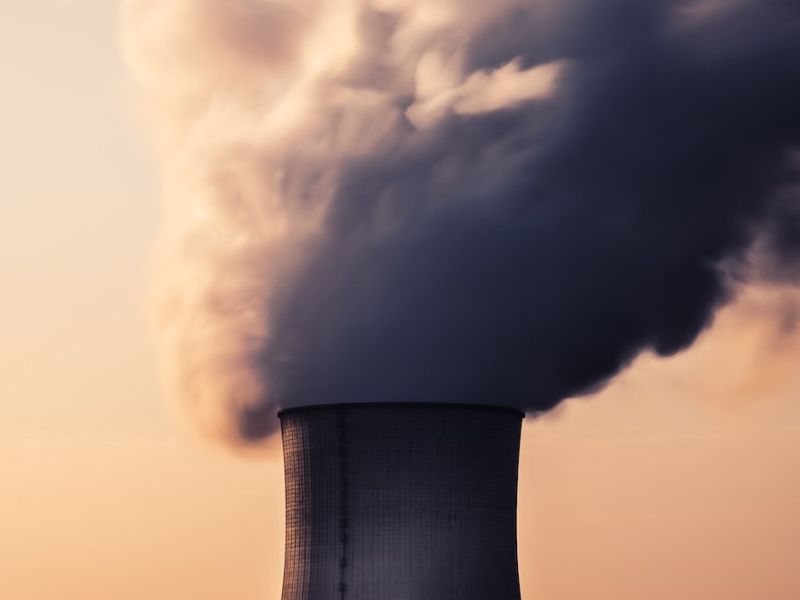
Net Zero Buildings – Everything you need to know
Due to the UK’s targets of reaching net zero by 2050, many industries are searching for ways to be sustainable and reduce their carbon emissions. One industry that is under increasing pressure is the real estate and building sectors. Their manufacturing efforts of construction are carbon intensive but also the end results of the buildings themselves contribute to 40% of global energy consumption. This results in a growing demand for buildings be net zero to help towards an environmentally responsible future.
Along with the UK’s net zero target, the concept of Net Zero Buildings is being pushed by the European Union’s Energy Performance of Buildings Directive (EPBD). This legalisation requires all new buildings from 2021 (public buildings from 2019) to be Nearly Zero Energy Buildings. Similarly, in the US, the state of California has led with stringent building codes aiming for all residential constructions to be net zero by 2020 and commercial buildings by 2030.
What are Net Zero Buildings?
Net zero buildings are structures designed to significantly reduce carbon emissions by balancing the energy they consume with renewable energy they produce. A net zero building is designed to produce as much renewable energy onsite (or sustainably procured), as they consume over a specified period, typically a year. To achieve this the building must use energy efficiency measures and the integration of renewable energy sources, ensuring that the building’s operational carbon footprint is dramatically minimized. Once the carbon footprint is reduced, energy producing techniques can be installed to create an equal balance or even surplus energy.
Key Components of Net Zero Buildings
The two key components of Net Zero Buildings are maximizing energy efficiency and producing renewable energy.
Maximizing Energy Efficiency
By using sustainable materials and construction methods, net zero buildings are energy efficient with lower carbon footprints. Innovative materials and technology are utilized to sharply reduce energy needs through advanced insulation, high-performance windows, and energy-efficient lighting and appliances. Materials like rapidly renewable bamboo and recycled steel are essential, not only for their lower embodied carbon but also for their contribution to a more sustainable building.
In addition to the building materials, the construction techniques that minimize waste and promote durability are fundamental, signifying a deep commitment to environmental responsibility from the outset.
Producing Renewable Energy
Net Zero Buildings are designed to produce their own energy, often exceeding their consumption needs, through solar panels or wind turbines, thereby contributing positively to the energy ecosystem.
Different Levels of Net Zero Buildings
Achieving full Net Zero on a building isn’t always straightforward forward and some buildings will be unable to be 100% Net Zero. There are a range of terms to label buildings that are trying to achieve Net Zero but may be at different degrees of energy efficiency and sustainability.
One of these factors is how the energy supplied to meet the building’s requirement is sourced, if 100% of the energy required is coming from the building’s on-site renewables then the building can call itself ‘Net Zero Energy Building’.
As this may not be possible in all buildings due to their location or structure, if renewable energy is coming from off-site sources and being imported to meet the demand the building is classed as ‘Net Zero Operational Carbon’. This may also be defined as ‘Net off-site zero energy use’.
When constructing a new building there is the carbon consumption used in the production of the building which is known as embodied carbon. A new development should look to achieve the maximum embodied carbon reduction possible. This can be achieved by renovating existing buildings or choosing sustainable materials and construction methods. Once reduced, if the remaining embodied carbon still needs further reducing and offsets are used to achieve this, the building is known as ‘Net Zero Life Carbon’.
Certification and Standards
To help achieve a net zero standard there are industry recognised standards and green building certifications. These provide site owners with a benchmark for understanding what qualifies a building as net zero.
BREEAM
BREEAM (Building Research Establishment Environmental Assessment Method) is a global sustainability standard and rating system established in 1900 in the UK. BREEAM provides third-party verification for individual buildings, communities and infrastructure projects. With an estimated 500,000 buildings using this label across 83 countries it is globally trusted and provides great recognition for site owners to demonstrate the quality of their building’s environmental performance.
LEED
LEED (Leadership in Energy and Environmental Design) was established by the US green Building Council in 2000. It is a green building rating system similar to BREEAM where it provides third-party verification for the design, construction and operations of superior green buildings.
Passivhaus
Originating in Germany, Passivhaus, translates to passive house in English. It is an energy efficiency standard where the goal is that the design of the building maintains an almost constant temperature. It is becoming more popular in the UK because building can achieve a standard of design and construction where the demand energy to use towards heating and cooling is very low making it easier to reduce the building’s carbon footprint and therefore a building will need less renewable energy to become net zero.
Technological Advancements and Innovations in Net Zero Buildings
Net zero buildings must use technological advancements and innovative solutions across the construction and energy sectors to be successful. High-efficiency HVAC systems that reduce energy needed for heating and cooling are crucial, along with smart building technologies that allow for real-time energy management adapting to usage patterns to conserve energy are a must. Let’s review some in more detail:
Energy Recovery Ventilators (ERVs):
ERVs are critical in managing ventilation in a way that minimizes energy loss. They work by capturing energy from exhaust air and using it to condition incoming fresh air. This is particularly effective in maintaining a comfortable indoor environment without the need for additional heating or cooling energy, which is a significant contributor to a building’s energy load.
Phase-Changing Materials (PCMs):
PCMs are substances with a high heat of fusion which, melting and solidifying at certain temperatures, are capable of storing and releasing large amounts of energy. Incorporated into building materials such as wallboards or ceiling tiles, they can absorb excess heat during the day, preventing indoor temperatures from rising too high, and then release that heat when the temperature drops. This passive temperature regulation reduces the need for active heating and cooling systems, conserving energy.
Building Orientation and Natural Resources:
The intelligent design of net zero buildings, including their orientation, is vital for maximizing natural light and reducing the need for artificial lighting. The incorporation of green roofs, living walls, rainwater harvesting and natural ventilation systems leverages natural resources, enhancing energy efficiency and reducing environmental impact. These design principles not only improve the sustainability of buildings but also their aesthetic and health benefits to occupants with the psychological benefits of cleaner air, exposure to more natural sunlight and the well-being that green spaces and house plants can provide.
Smart Grid Integration:
The integration with smart grids enables a dynamic interaction with the energy grid. Through advanced communication capabilities, smart grids facilitate a two-way flow of energy and information, allowing buildings to supply excess energy back to the grid and draw power when necessary. This integration, coupled with energy storage solutions, optimizes energy usage and contributes to a more resilient, efficient, and sustainable energy ecosystem.
By harnessing these technologies, net zero buildings can effectively reduce their energy demand, making it easier to generate the right amount of energy they require themselves, and even contribute surplus energy back to the grid, marking a significant step towards sustainable living and construction practices.
Challenges and Considerations in Net Zero Buildings
Successfully making a building net zero isn’t easy and there are a range of challenges that must be overcome.
Financial and Technological Barriers:
The initial investment in advanced technologies and materials for net zero buildings often poses a significant financial challenge. High costs can deter adoption, making it imperative for innovative financial solutions and incentives to be part of the equation.
However, once these costs are overcome internal, or perhaps with some government grants to make the proper investments, the long term cost saving and return on investment that a sustainable building brings can be very attractive to businesses, organisations and homeowners.
Policy and Regulatory Frameworks:
The regulatory environment can either catalyze or impede the progress of net zero construction. The development of supportive policies, including tax incentives, rebates, and streamlined regulations, can lower barriers to entry.
Renewable Energy Integration:
Incorporating renewable energy solutions requires careful consideration of local climates and geographical nuances to ensure effectiveness and reliability. It’s a balancing act between the available technology and the specific environmental context of the building site.
The Future of Net Zero Buildings
The future of net zero buildings looks bright. They are experiencing global adoption influenced by technology innovations, growing environmental awareness, and governmental supportive policies, schemes and incentives to help business owners hit the goals they have set.
Beneath the surface of these advancements lies a core of resilience. Future net zero buildings are being designed to withstand the rigors of climate change, ensuring that they are not just sustainable, but also adaptable and robust against extreme conditions. This commitment to resilience is becoming as integral as the buildings’ sustainable features, ensuring long-term performance and community protection in the face of environmental uncertainty.
The collaborative push for continued innovation in materials, renewable technologies, and strategic policies remains fundamental to actualising this vision universally.
Conclusion
Net zero buildings represent a bold step forward in reducing our environmental impact, they can be challenging to plan but extremely rewarding when successful. We are seeing several excellent examples of Net Zero buildings as more buildings follow these standards. These structures, pivotal in the role of sustainability, are set to redefine industry standards, aiding significantly in greenhouse gas emission reduction.
How can PES help?
Whether you’re looking for support with a net zero building or looking to achieve net zero across your whole business or organisation, PES’s energy consultants can help you with your net zero strategy. We can support you with measuring your carbon footprint, optimising your sites for energy efficiency and carbon reduction, sourcing your renewable energy if you require it from off-site sources, consulting and setting up your own renewable energy or managing your carbon offset campaigns. Speak to our team to reach your net zero goals.
Related Posts

How to Develop a Net Zero Strategy for your Business

How to effectively measure the Carbon Footprint of your Business
